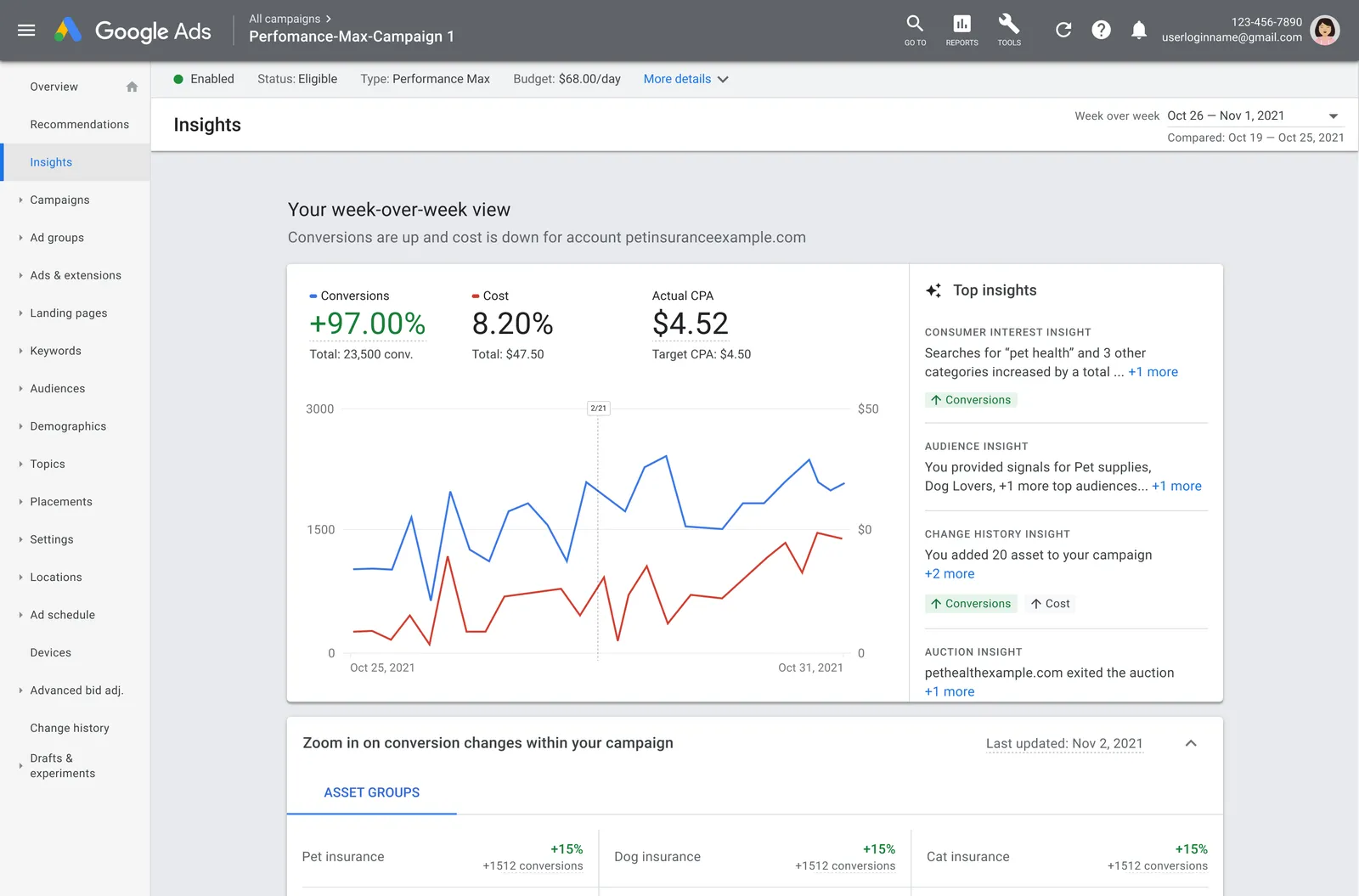
Google Marketing Platform (Performance Max): Complete Buyer's Guide
AI-first approach to cross-channel campaign automation
Performance Max fundamentally reimagines campaign management by eliminating traditional keyword targeting in favor of real-time intent analysis and conversational query matching. The platform automatically generates creative assets, optimizes bidding strategies, and allocates budgets across Search, Display, YouTube, Gmail, and Discover based on AI-driven performance signals[130][132][145].
Market Position & Maturity
Market Standing
Google Marketing Platform maintains dominant market positioning as the world's largest digital advertising platform, with Performance Max representing Google's strategic evolution toward AI-first campaign management[130][145].
Company Maturity
Technological maturity reflects Google's decade-plus investment in machine learning and advertising optimization, with Performance Max building upon proven AI capabilities from Google's broader ecosystem[145].
Industry Recognition
Market leadership is evidenced through widespread enterprise adoption across diverse industries, from e-commerce leaders like KEH Camera to educational institutions like Universitat Oberta de Catalunya and telecommunications giants like Vodafone Turkey[141][137][144].
Longevity Assessment
Long-term viability is supported by Google's continued investment in AI research and advertising technology, with Performance Max representing core strategic direction rather than experimental offering[132][134].
Proof of Capabilities
Customer Evidence
KEH Camera achieved 76.3% revenue increase and 44.1% transaction growth, representing substantial e-commerce performance improvement attributed directly to Performance Max implementation with comprehensive historical data preparation[141].
Quantified Outcomes
Performance benchmarks include consistent average CPC of $0.68 versus Google Ads' $0.85 average, representing 20% cost efficiency gains across implementations[133][136].
Case Study Analysis
Educational sector validation comes from Universitat Oberta de Catalunya's 68% higher conversions and 16% improved ROAS for student recruitment campaigns, demonstrating platform effectiveness beyond e-commerce applications[137].
Market Validation
Cross-industry validation extends to trade schools improving lead quality by 17% using offline conversion tracking, though enrollment costs decreased by 59% despite slightly reduced lead quality[139][142][143].
Reference Customers
Telecommunications industry proof includes Vodafone Turkey's 18% lead increase at 70% lower acquisition costs compared to traditional Search campaigns[144].
AI Technology
Performance Max employs a sophisticated AI architecture that fundamentally differs from traditional keyword-based campaign management through three core technological innovations[130].
Architecture
Integration architecture supports comprehensive data connectivity through Google Analytics 4, Google Tag Manager, and Customer Match capabilities, enabling sophisticated audience signal configuration that fuels AI learning effectiveness[145].
Primary Competitors
Performance Max competes primarily against traditional Google Search campaigns and comprehensive marketing automation platforms like Salesforce Marketing Cloud and Adobe Experience Cloud[130][131].
Competitive Advantages
Primary competitive advantages include unmatched inventory access across Google's complete advertising ecosystem and generative AI integration unavailable in standalone Search campaigns[133][136][145].
Market Positioning
Market positioning establishes Performance Max as Google's AI-first solution for automated campaign management, competing on operational efficiency and scale rather than granular control[130][131].
Win/Loss Scenarios
Win scenarios favor Performance Max for organizations prioritizing automation and scale over granular control, particularly those with sufficient historical conversion data and brand safety processes[141][145].
Key Features

Pros & Cons
Use Cases
Integrations
Pricing
Featured In Articles
Comprehensive analysis of AI Campaign Management for AI Marketing & Advertising for AI Marketing & Advertising professionals. Expert evaluation of features, pricing, and implementation.
How We Researched This Guide
About This Guide: This comprehensive analysis is based on extensive competitive intelligence and real-world implementation data from leading AI vendors. StayModern updates this guide quarterly to reflect market developments and vendor performance changes.
147+ verified sources per analysis including official documentation, customer reviews, analyst reports, and industry publications.
- • Vendor documentation & whitepapers
- • Customer testimonials & case studies
- • Third-party analyst assessments
- • Industry benchmarking reports
Standardized assessment framework across 8 key dimensions for objective comparison.
- • Technology capabilities & architecture
- • Market position & customer evidence
- • Implementation experience & support
- • Pricing value & competitive position
Research is refreshed every 90 days to capture market changes and new vendor capabilities.
- • New product releases & features
- • Market positioning changes
- • Customer feedback integration
- • Competitive landscape shifts
Every claim is source-linked with direct citations to original materials for verification.
- • Clickable citation links
- • Original source attribution
- • Date stamps for currency
- • Quality score validation
Analysis follows systematic research protocols with consistent evaluation frameworks.
- • Standardized assessment criteria
- • Multi-source verification process
- • Consistent evaluation methodology
- • Quality assurance protocols
Buyer-focused analysis with transparent methodology and factual accuracy commitment.
- • Objective comparative analysis
- • Transparent research methodology
- • Factual accuracy commitment
- • Continuous quality improvement
Quality Commitment: If you find any inaccuracies in our analysis on this page, please contact us at research@staymodern.ai. We're committed to maintaining the highest standards of research integrity and will investigate and correct any issues promptly.